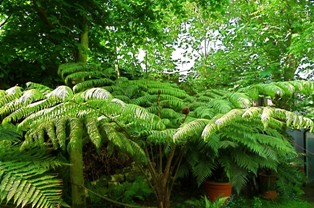Are you writing a school paper on botany and would like to know more about the Australian tree ferns? Read our informative and factual guide…
The Australian tree fern is known for its stunning beauty and although tree ferns are common across many countries, the Australian version is a favorite among many nature enthusiasts. Ferns need high humidity and partial shade to survive so they are usually found in the tropical or sub tropical forests. These ferns can reach a height of 50 feet in nature with surprisingly well spread fronds that can be 20 feet wide. However, when grown at home; the plants can be fussy and will easily succumb to inappropriate weather conditions.
If you are thinking about buying an Australian tree fern for your garden or conservatory; this is what you need to know about the growing conditions:
• Temperature: Even though they can survive light frost; they are susceptible to sudden changes in temperature, a sudden hot, dry spell can kill them
• Light: The plants grow well in shade or dappled sun; you should not expose them to direct sunlight; however, if you live in the northern latitudes they can handle stronger sun.
• Soil: The soil has to be well drained and rich to grow Australian tree fern
• Water: Don’t let the soil dry out, they do well with regular watering and copious amounts of moisture
• Fertilizers: You can use slow release fertilizer pellets thrice a year.
Australian tree fern is also known as Cyathea Cooperi and even though there are other types of ferns available in the market such as the Mexican tree fern they are not related to the Australian variety.
These plants are native to Australia and New Zealand and are a common sight on misty mountain sides where they grow abundantly. If you intend to grow them indoors ensure that you find them wet, moist and moderate or mild conditions. They do not like direct sunlight or extreme heat. The plants cannot tolerate compost and dry air and if not taken care of properly; they can quickly die.
The Australian tree fern is a heavy feeder so you need to ensure the application of fertilizer at least thrice a year. It is recommended that you trim off the bottom fronds that are dry or dead and concentrate on protecting the central growth point from where the new fronds shoot out on curling arches.
There are several plant nurseries in Australia that offer this fern and even if you live outside Australia, you could still grow them successfully with some diligent effort and a controlled environment.





